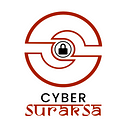Beyond ‘123456’: Navigating the World of Password Security
Introduction
In today’s digitally connected world, password security has become a critical concern for individuals and organizations alike. The days of using simple and easily guessable passwords like ‘123456’ are long gone. Cybercriminals have become increasingly sophisticated, making it essential for everyone to understand the importance of robust password security. This blog post explores the evolution of password security beyond basic combinations, providing insights and strategies to help you navigate the complex landscape of online protection.
The Fallacy of ‘123456’ and Similar Passwords
Gone are the days when setting a password as simple as ‘123456’ or ‘password’ was considered acceptable. Cyber attackers leverage advanced tools that can crack weak passwords within seconds, exposing sensitive information and leading to data breaches. Using easily guessable passwords is akin to leaving your front door unlocked in a crime-ridden neighborhood.
The Evolution of Password Security
Complexity Matters
The key to a strong password is complexity. A mix of upper and lower case letters, numbers, and special characters significantly enhances the strength of your password. For instance, ‘P@$$w0rd!’ is far more secure than ‘password123’.
Password Length
Longer passwords are inherently more secure. Aim for a minimum of 12 characters, and consider using phrases or combinations of unrelated words. A password like ‘BlueMoon$parklingSkies’ is not only memorable but also highly secure.
Unique Passwords
Using the same password across multiple accounts is a dangerous practice. If one account gets compromised, all your other accounts become vulnerable. Consider using a reputable password manager to generate and store unique passwords for each account.
Two-Factor Authentication (2FA)
This adds an extra layer of security by requiring a second form of verification beyond your password. It could be a fingerprint scan, a text message code, or a biometric scan, reducing the risk even if your password is compromised.
Practical Tips for Creating Secure Passwords
Acronyms and Abbreviations
Create a password by stringing together the first letters of a memorable phrase. For example, ‘I love spending time at the beach’ becomes ‘Ilst@tb!’.
Random Substitutions
Replace letters with visually similar numbers or characters. For instance, ‘S3cur1ty’ instead of ‘Security’.
Avoid Personal Information
Refrain from using easily discoverable information like your birthdate, pet’s name, or family members’ names in your passwords.
Conclusion
In an age where our digital lives are intricately woven into every facet of our existence, password security is non-negotiable. The days of ‘123456’ serving as a protective gatekeeper are over, and it’s time to embrace stronger, smarter password practices. By understanding the evolving landscape of password security and implementing strategies like complex combinations, longer passwords, and two-factor authentication, you can fortify your online presence and protect your sensitive information from the ever-looming threat of cybercrime. Remember, a small investment in password security today can prevent immeasurable loss tomorrow.
